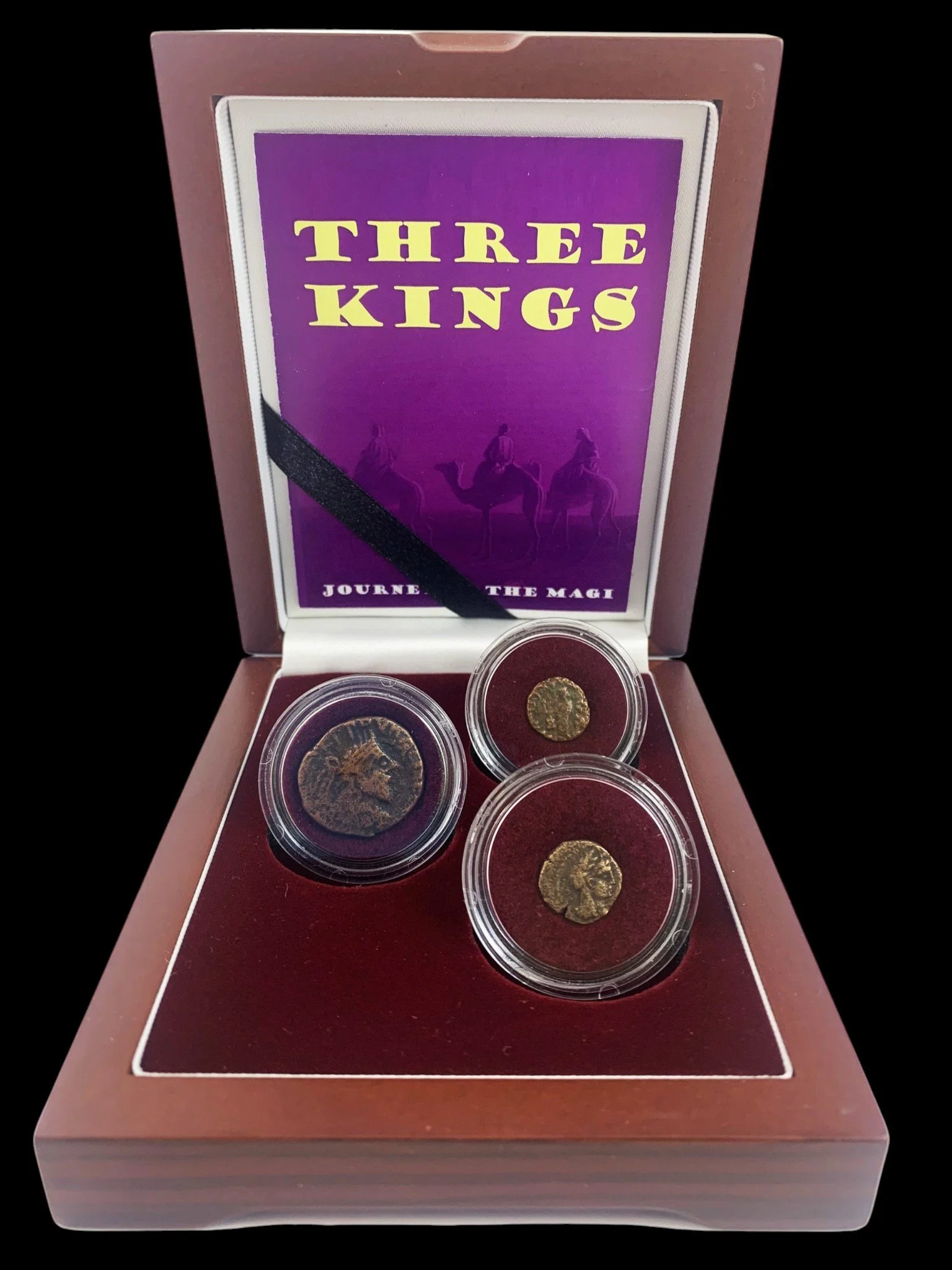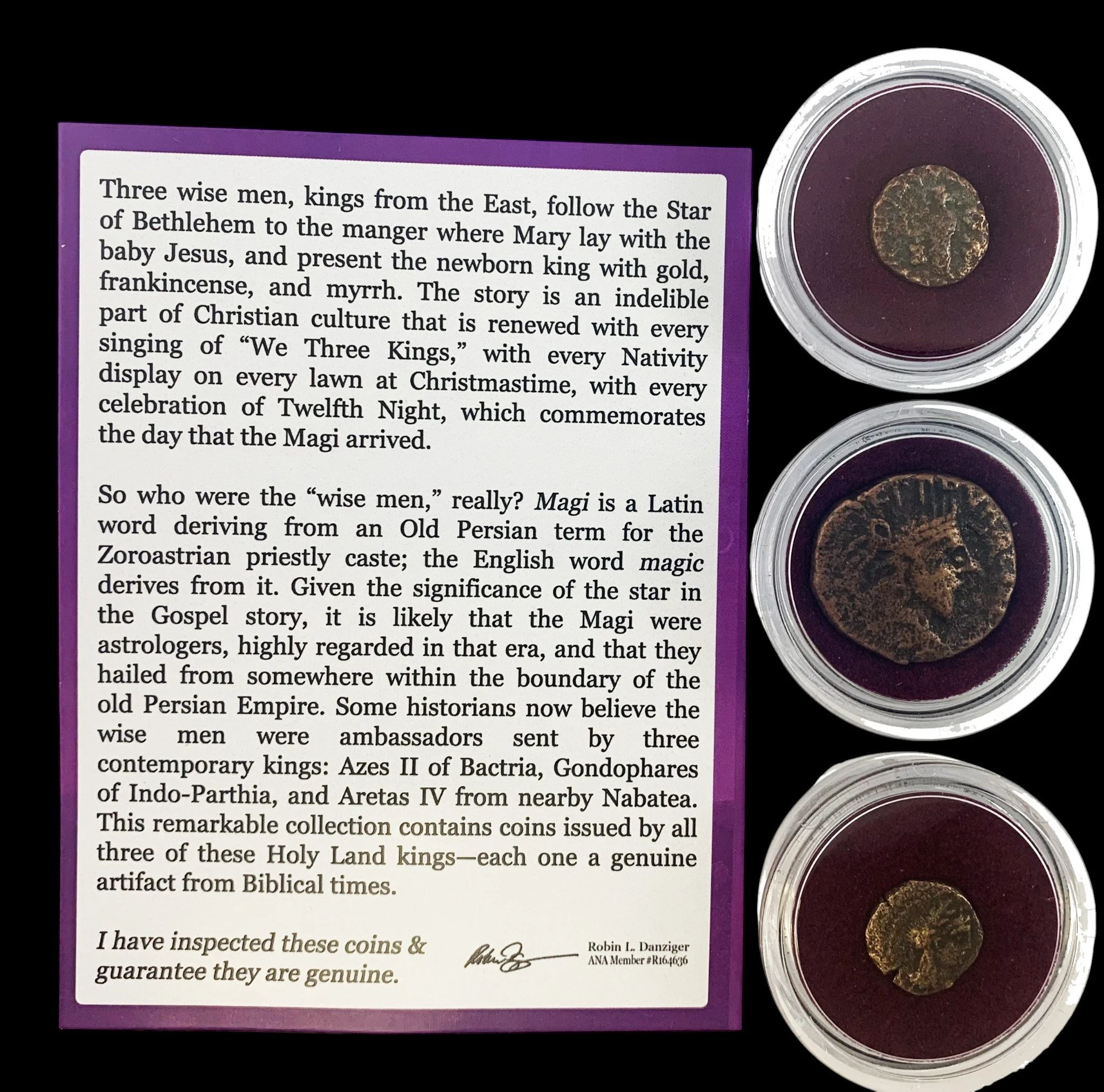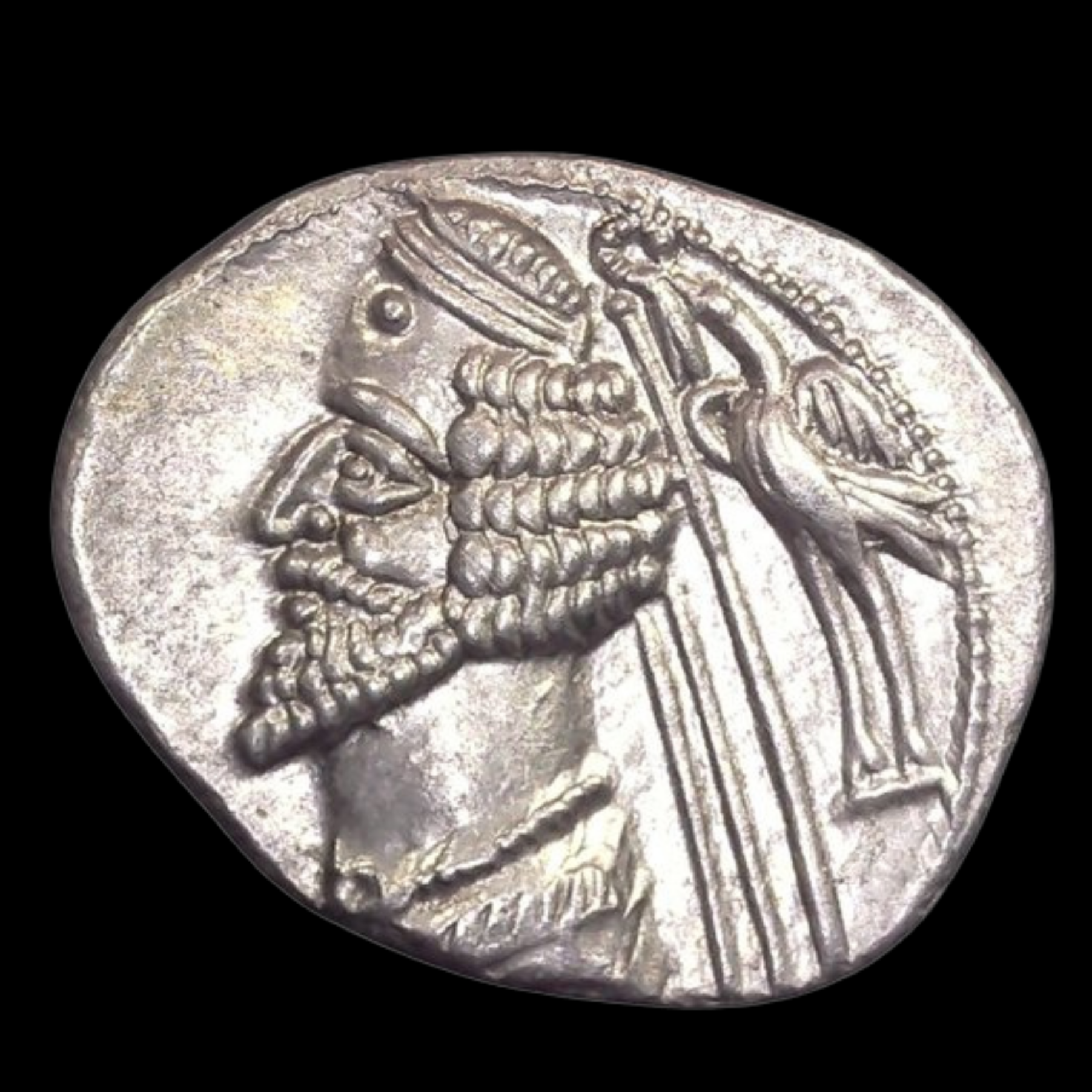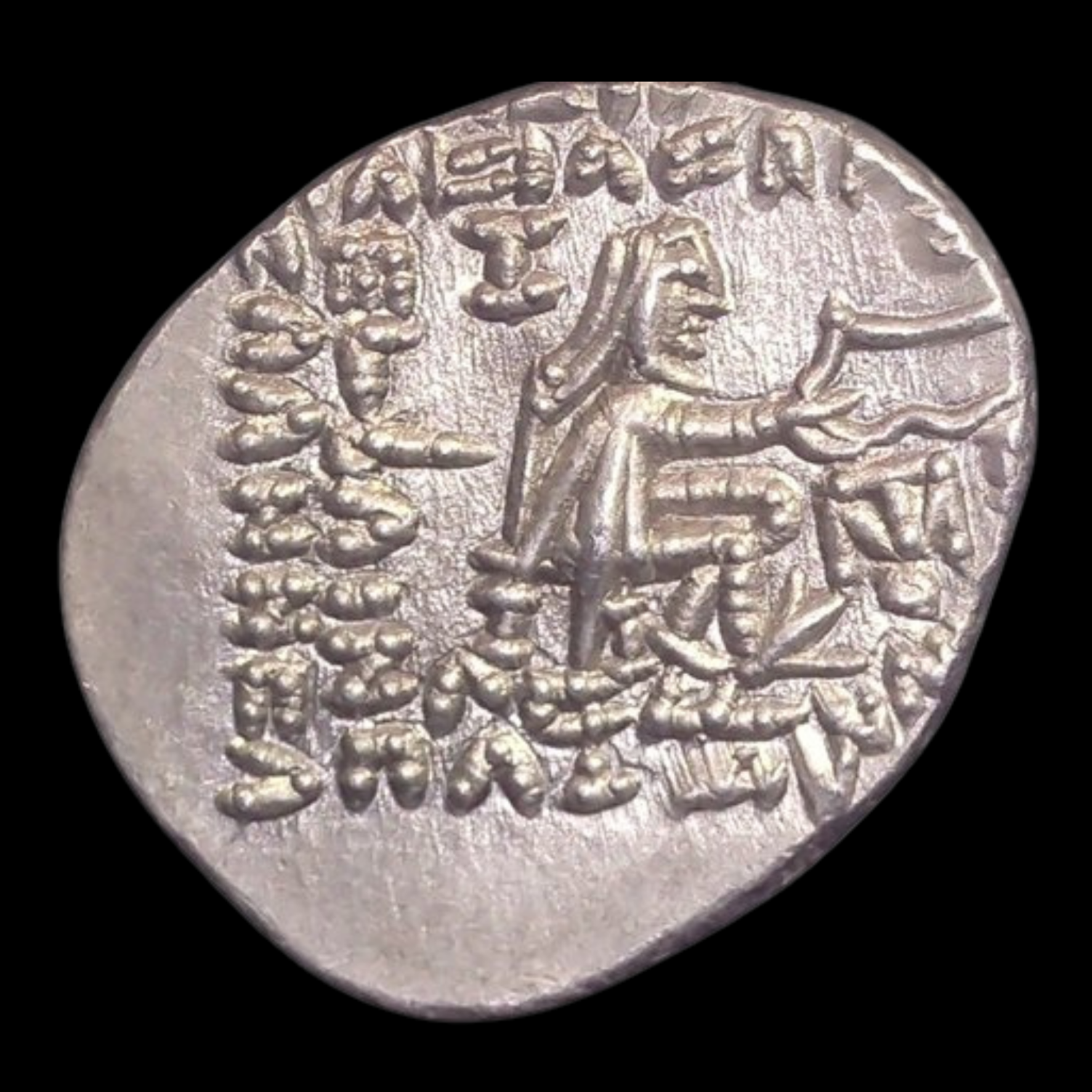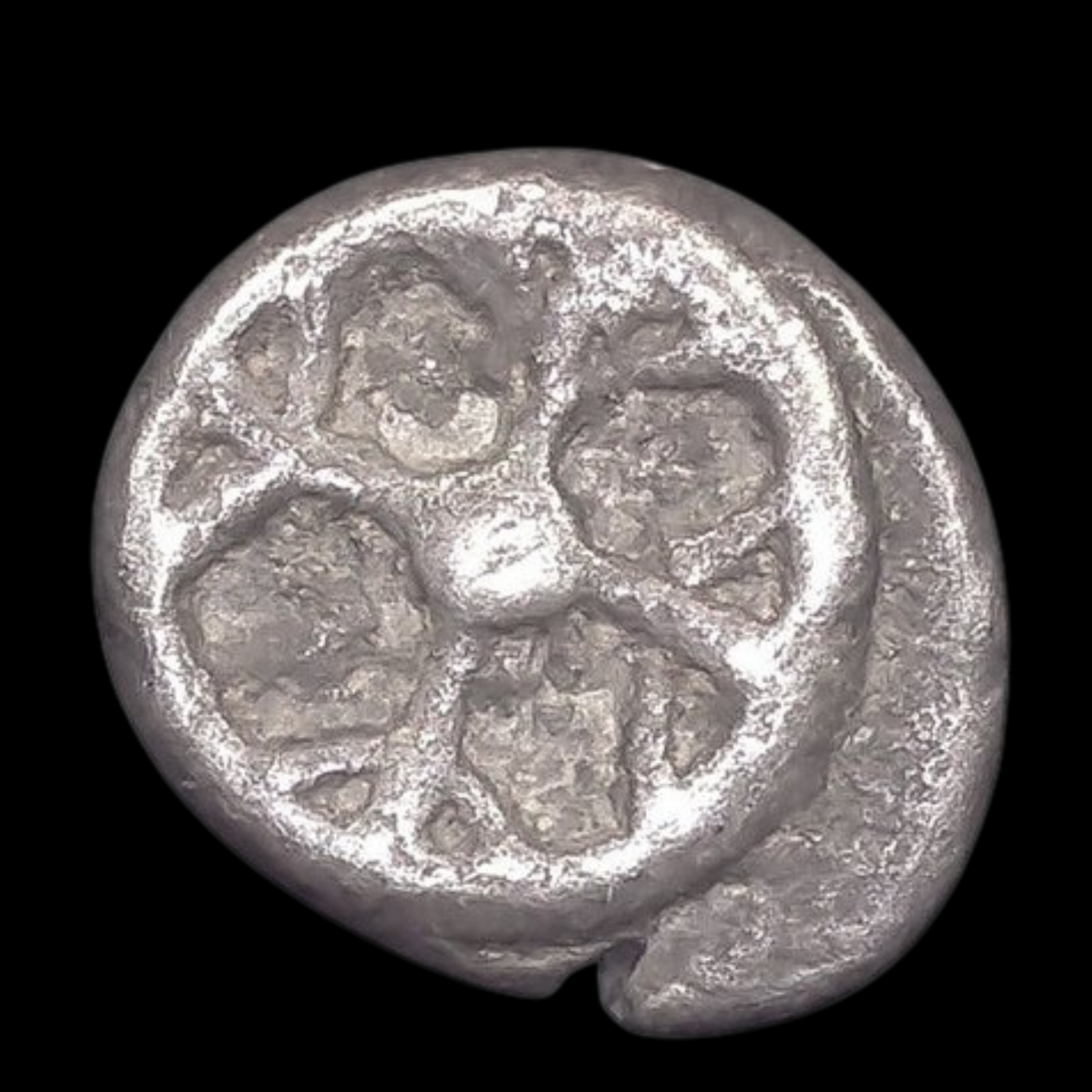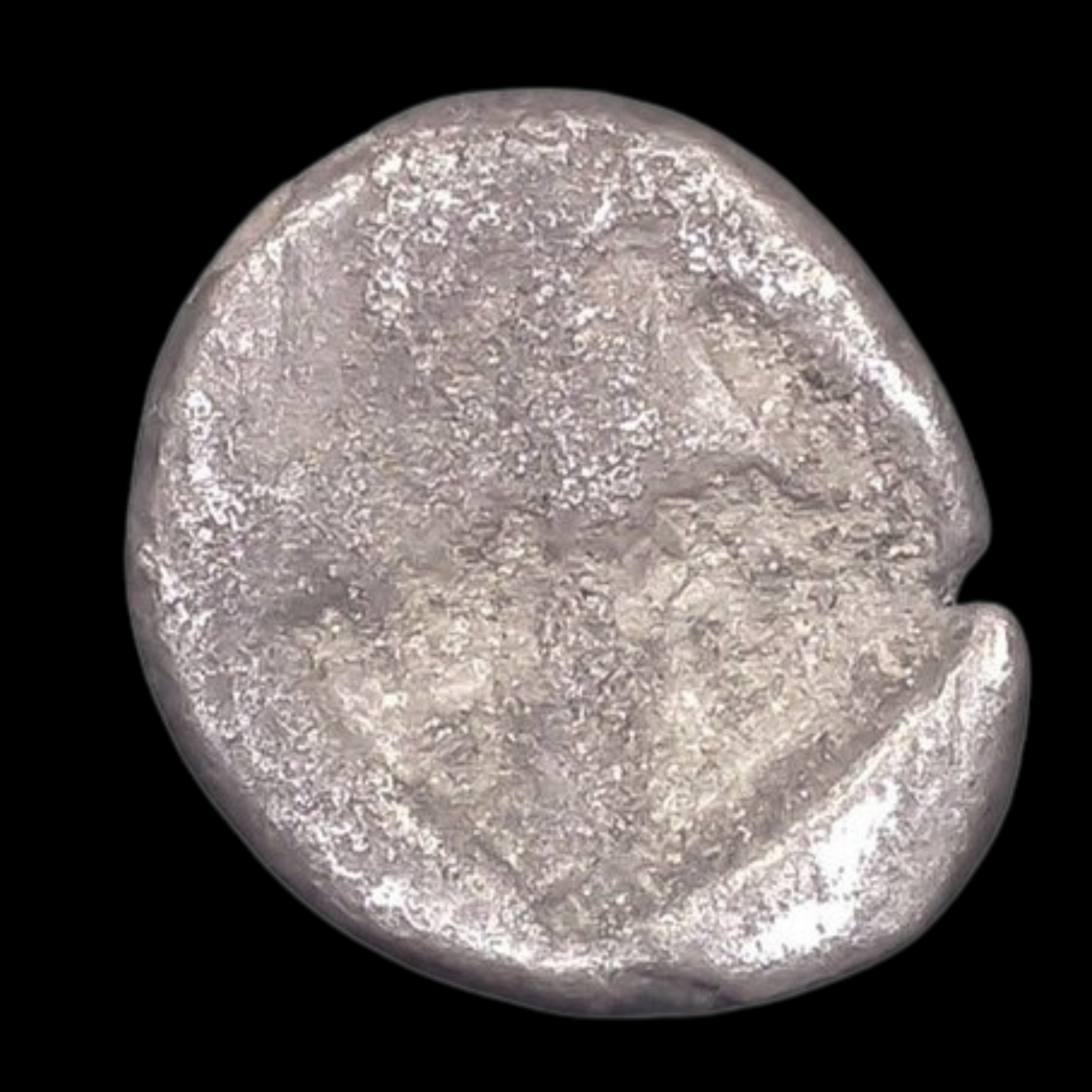 Image 1 of 2
Image 1 of 2

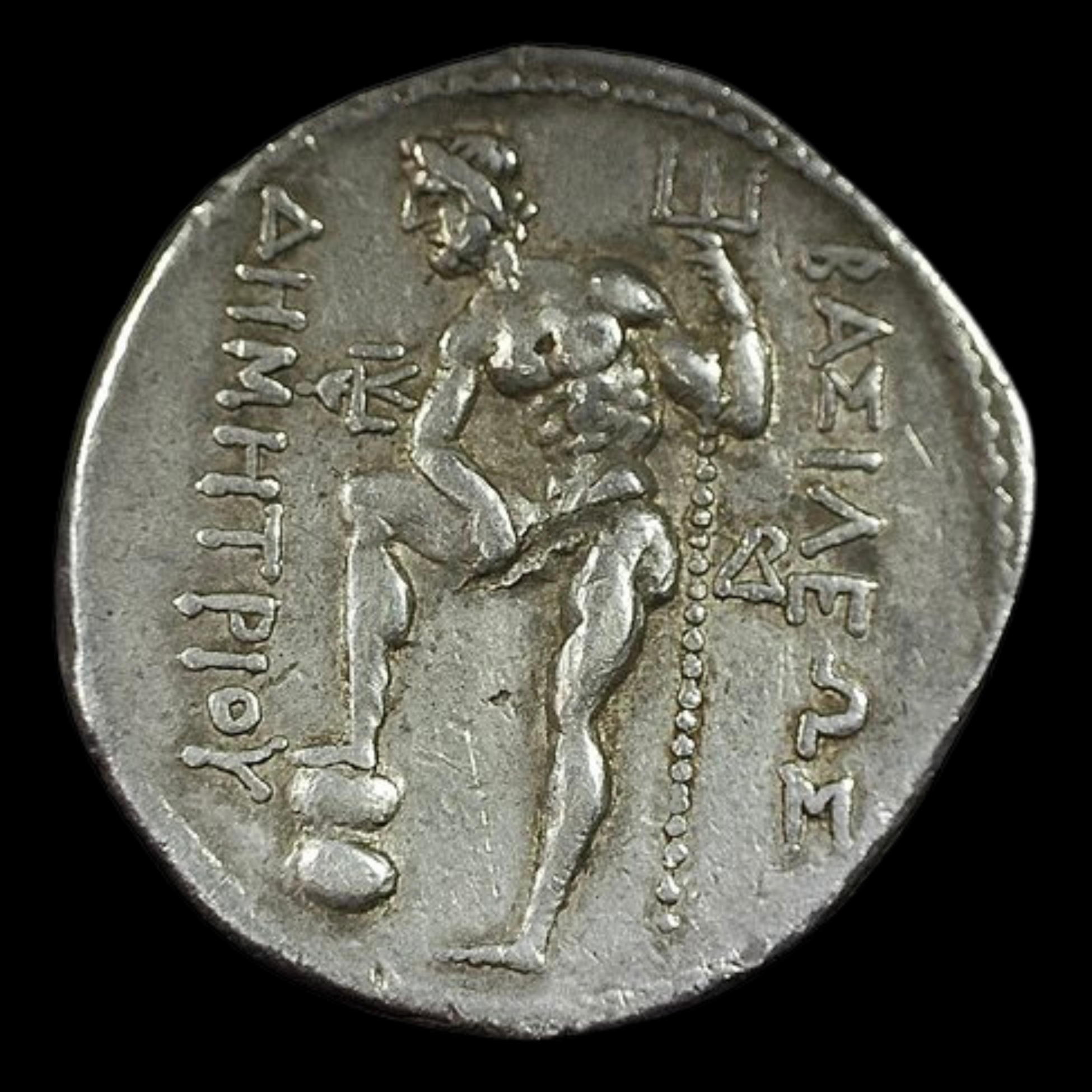 Image 2 of 2
Image 2 of 2



Silver Coin of King Demetrios Poliorketes (about 2,315 years old)
This impressive silver coin is a tetradrachm issued under King Demetrios I "Poliorketes" (meaning "the Besieger") of Macedon around 290-289 BC. Minted in Amphipolis in ancient Macedonia (modern northern Greece), it showcases both the ruler's self-promotion and the exceptional artistic quality of Hellenistic coinage.
Coin Description:
Front side: The portrait of King Demetrios Poliorketes is depicted wearing a crown and horn symbols (bull horns, representing divine power). This realistic portrait style became common after Alexander the Great, as rulers began placing their own images on coins.
Back side: The sea god Poseidon is shown standing with one foot on a rock, proudly holding his trident (three-pronged spear). This imagery connects Demetrios to naval power, which was crucial to his military campaigns.
Technical Details:
Silver composition
Tetradrachm (a large denomination in the Greek monetary system)
Weight: 17.16 grams
Size: approximately 30mm across
Minted in Amphipolis
Struck around 290-289 BC
Condition not specified
Historical Significance: This coin was produced during the tumultuous period following Alexander the Great's death in 323 BC, when his empire fractured into territories controlled by his generals (the "Diadochi" or Successors). Demetrios Poliorketes, son of Antigonus I Monophthalmus, became known for his siege engineering skills (hence his nickname "the Besieger") and his naval victories. The coin was minted during a time when Demetrios had gained control of Macedonia, though his reign would be relatively short-lived. The Poseidon imagery directly references Demetrios' naval power, which was instrumental in his military campaigns. Tetradrachms like this one were high-value coins used mainly for large transactions, trade, and payment to soldiers, making them important tools for both commerce and propaganda. The artistic quality represents the advanced craftsmanship of Hellenistic period mints, with more naturalistic portraiture than earlier Greek coinage.
This impressive silver coin is a tetradrachm issued under King Demetrios I "Poliorketes" (meaning "the Besieger") of Macedon around 290-289 BC. Minted in Amphipolis in ancient Macedonia (modern northern Greece), it showcases both the ruler's self-promotion and the exceptional artistic quality of Hellenistic coinage.
Coin Description:
Front side: The portrait of King Demetrios Poliorketes is depicted wearing a crown and horn symbols (bull horns, representing divine power). This realistic portrait style became common after Alexander the Great, as rulers began placing their own images on coins.
Back side: The sea god Poseidon is shown standing with one foot on a rock, proudly holding his trident (three-pronged spear). This imagery connects Demetrios to naval power, which was crucial to his military campaigns.
Technical Details:
Silver composition
Tetradrachm (a large denomination in the Greek monetary system)
Weight: 17.16 grams
Size: approximately 30mm across
Minted in Amphipolis
Struck around 290-289 BC
Condition not specified
Historical Significance: This coin was produced during the tumultuous period following Alexander the Great's death in 323 BC, when his empire fractured into territories controlled by his generals (the "Diadochi" or Successors). Demetrios Poliorketes, son of Antigonus I Monophthalmus, became known for his siege engineering skills (hence his nickname "the Besieger") and his naval victories. The coin was minted during a time when Demetrios had gained control of Macedonia, though his reign would be relatively short-lived. The Poseidon imagery directly references Demetrios' naval power, which was instrumental in his military campaigns. Tetradrachms like this one were high-value coins used mainly for large transactions, trade, and payment to soldiers, making them important tools for both commerce and propaganda. The artistic quality represents the advanced craftsmanship of Hellenistic period mints, with more naturalistic portraiture than earlier Greek coinage.




